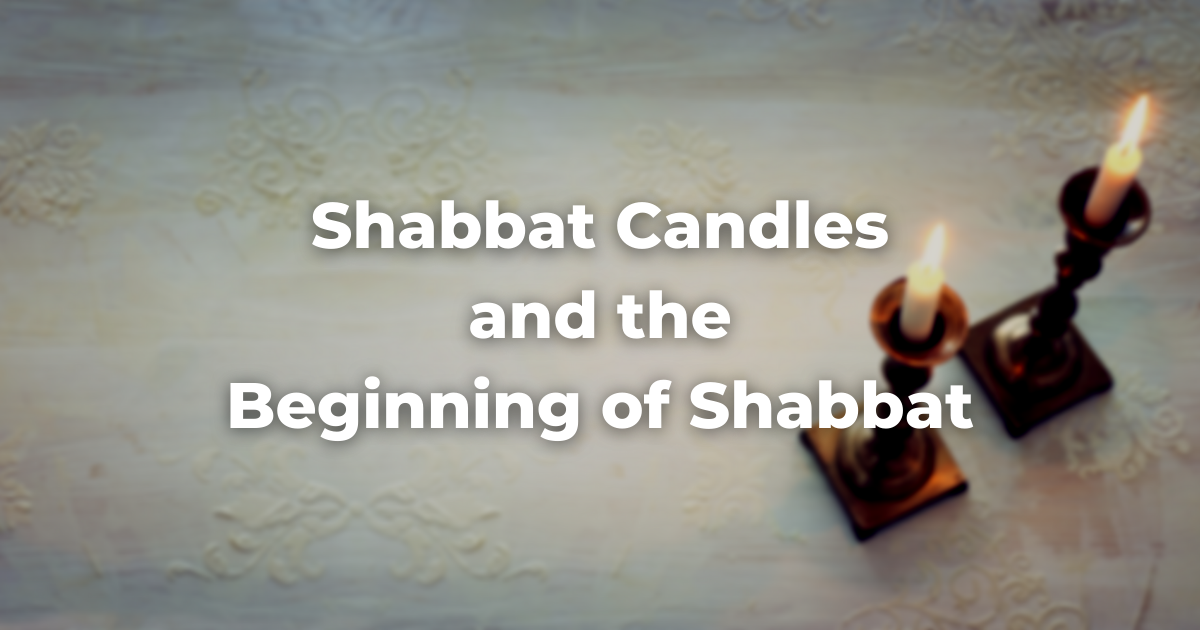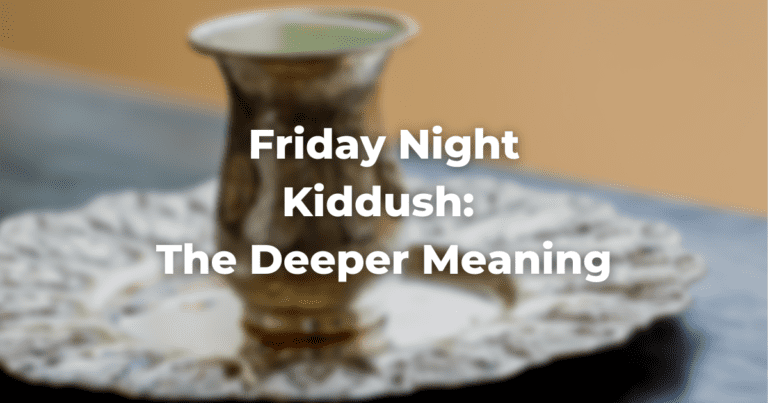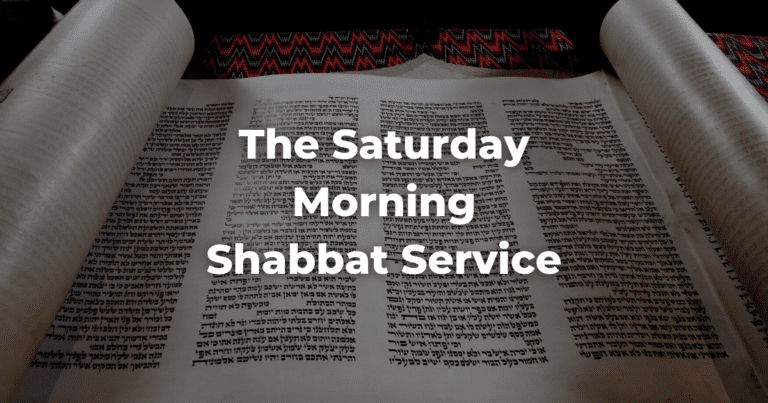We usher in Shabbat with the lighting of candles (SA Orach Chayyim 261, SA Orach Chayyim 263–265). In ancient times, this was a part of making the home physically ready, as the flames from the lamps or candles were an essential source of light in the house.
In our day, homes are generally lit by electric lights, but the Shabbat candles retain their importance because they are deemed powerfully symbolic of the spiritual light that Shabbat can bring into our lives.
Shabbat technically should begin at sunset.
However, because it is prohibited to kindle a flame once Shabbat begins, the halakhah sets a barrier in time between the last moment to light the Shabbat candles and the actual onset of Shabbat, thereby guaranteeing that no errors will be made. Therefore, we light Shabbat candles no later than eighteen minutes prior to sunset.
This is an example of “making a fence around the TorahRefers to the first five books of the Hebrew Bible, the Tanakh, also called the Five Books of Moses, Pentateuch or the Hebrew equivalent, Humash. This is also called the Written Torah. The term may also refer to teachings that expound on Jewish tradition. Read more” mentioned in Pirkei Avot (Avot 1:1). For similar reasons, we delay the ceremony that concludes Shabbat on Saturday evening, and this makes Shabbat last twenty-five, not twenty-four hours, each week. Jewish calendars list candle-lighting times of every Friday evening of the year.
Click here to check candle-lighting times.
The candles should be lit in the room in which we intend to eat Shabbat dinner so that we can see the candles and enjoy their light during dinner.
In Exodus 20:8, the Torah commands Israel to remember the Shabbat day, while in Deuteronomy 5:12, the commandment is specifically to observe Shabbat, not merely to remember it.
In a nod to these two versions of the fourth commandment, it is customary to light a minimum of two Shabbat candles (SA Orach Chayyim 263:1). Some, however, light one candle for each member of the family, or seven candles, one for each day of the week. There are also those who kindle ten candles, corresponding to the Ten Commandments.
There is a tradition that women light the Shabbat candles. However, this mitzvah is for everyone, regardless of gender, to light their own Shabbat candles. The obligation to recite Kiddush too falls on Jewish adults, regardless of gender as well (SA Orach Chayyim 271:2). We stress that both these mitzvot may be performed by people of all genders, even in the presence of members of the opposite sex.
Still, the tradition (as recorded, e.g., at M Shabbat 2:6) strongly suggests that women need to be especially scrupulous in lighting Shabbat candles, as well as taking a special pinch of dough while baking bread and burning it (in recollection of the ancient practice of giving gifts to the kohanim when baking bread in large enough quantities, as described elsewhere, and observing of the laws of family purity.
First, the Shabbat candles are lit.
Then, the individual closes their eyes and draws their hands to their face in a circular motion three times. (The gesture itself is purely optional. Individuals may simply cover their eyes with their hands if they wish, but the more traditional procedure represents the person’s wish to invite Shabbat into their home and their family’s life.)
With their hands covering their eyes, they then recite the traditional blessing:
Barukh attah adonai, eloheinu, melekh ha-olam, asher kidd’shanu b’mitzvotav v’tzivvanu l’hadlik neir shel shabbat.
Praised are You, Adonai, our God, Sovereign of the universe, who, sanctifying us with divine commandments, has commanded us to kindle the Shabbat lamp.
בָּרוּךְ אַתָּה ה’, אֱלֹקֵינוּ מֶלֶךְ הָעוֹלָם, אֲשֶׁר קִדְּשָׁנוּ בְּמִצְוֹתָיו, וְצִוָּנוּ לְהַדְלִיק נֵר שֶׁל שַׁבָּת:
The reason for this ritual is complicated.
The basic concept is that blessings are generally recited before performing the acts that they sanctify. However, since the blessing over the candles, when recited, is deemed to inaugurate Shabbat, the person would then be forbidden to light the candles subsequent to their own blessing because kindling a flame is prohibited on Shabbat.
Consequently, they light the candles first, then cover their eyes so that they can recite the blessing before enjoying and benefiting from the light of the candles.
It is also customary to recite a personal meditation at this moment. An example, by Navah Harlow, is as follows:
As I light these Shabbat candles, I feel the frenzied momentum of the week slowly draining from my body. I thank You, Creator, for the peace and relaxation of Shabbat, for moments to redirect my energies toward those treasures in my life which I hold most dear. Had You not in Your infinite wisdom created the Shabbat day, I may not have stopped in time. May the peace of Shabbat fill our hearts, fill our home, fill the world. Amen. (Siddur Sim Shalom I, p. 720)
Adapted with permission from The Observant Life.
Authors
-

The Observant Life: The Wisdom of Conservative Judaism for Contemporary Jews distills a century of thoughtful inquiry into the most profound of all Jewish questions: how to suffuse life with timeless values, how to remain loyal to the covenant that binds the Jewish people and the God of Israel, and how to embrace the law while retaining an abiding sense of fidelity to one’s own moral path in life. Written in a multiplicity of voices inspired by a common vision, the authors of The Observant Life explain what it means in the ultimate sense to live a Jewish life, and to live it honestly, morally, and purposefully. The work is a comprehensive guide to life in the 21st Century. Chapters on Jewish rituals including prayer, holiday, life cycle events and Jewish ethics such as citizenship, slander, taxes, wills, the courts, the work place and so much more.
View all posts -







